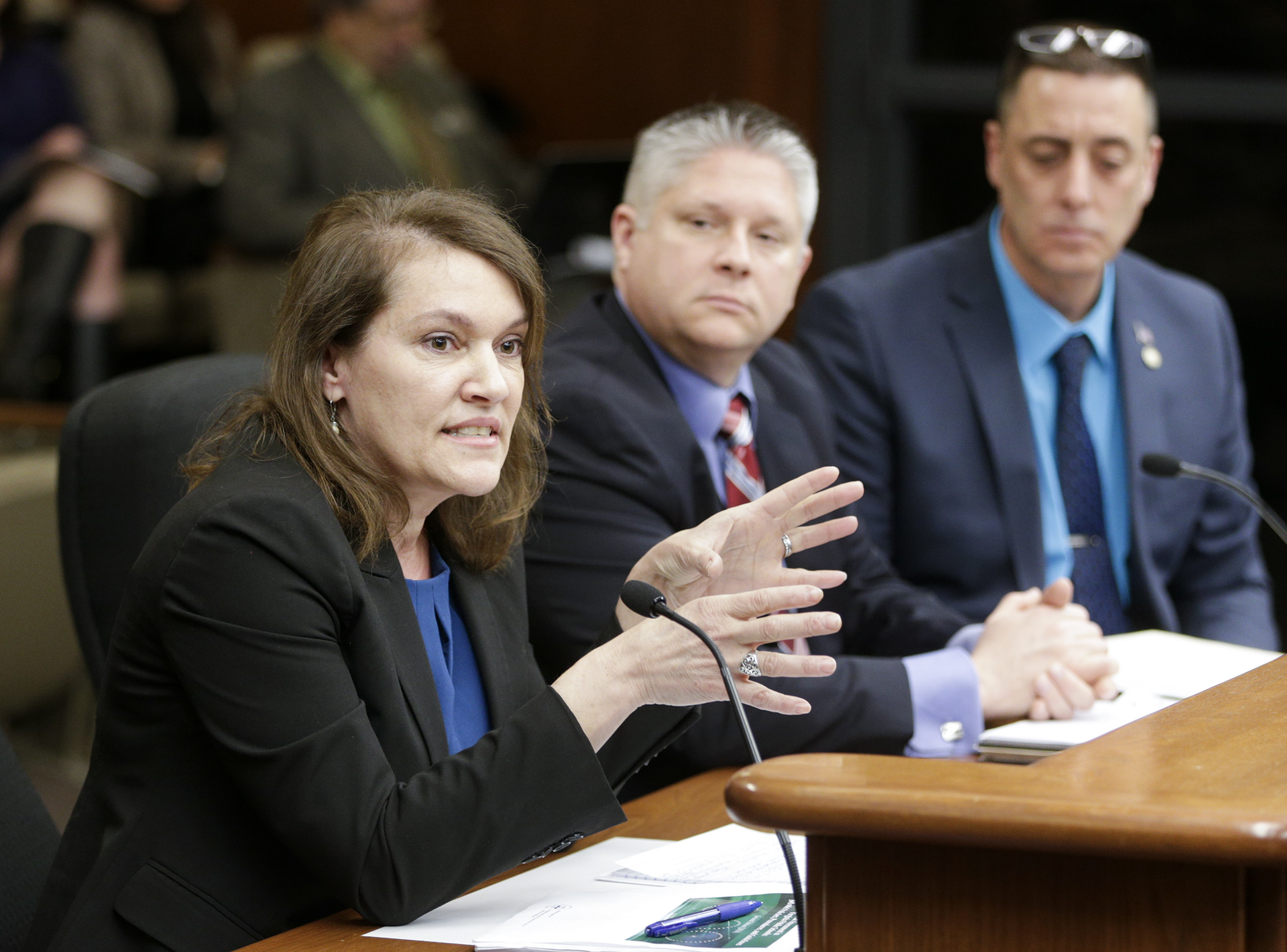Plan to create school threat assessment teams receives bipartisan support

More and more lawmakers are putting their ideas on the table in an effort to stop school violence.
Sponsored by Rep. Keith Franke (R-St. Paul Park), HF3370 would require school districts to establish a threat assessment team to evaluate and intervene when an individual displays behaviors that pose a threat to the safety of school staff and students.
The House Education Innovation Policy Committee approved the bill Tuesday and sent it to the House Civil Law and Data Practices Policy Committee. The companion, SF2993, awaits action by the Senate E-12 Policy Committee. Sen. Karla Bigham (DFL-Cottage Grove) is the sponsor.
Dr. Kristine Kienlen, a forensic psychologist, said preventative strategies are the key to tackling school violence.
“Once the school is being evacuated or is in lockdown because of a school shooting, it’s really too late because then there are deaths and injuries and hundreds if not thousands traumatized,” she said. “What we really need is a preventative approach, and that is what the threat assessment approach is about.”
While a handful of districts across the state currently have “ad hoc” threat assessment teams in place, many are not formally trained and do not operate consistently with accepted best practices.
WATCH Committee discussion of the bill
The bill would establish multi-disciplinary threat assessment teams across all districts comprised of counselors, teachers, mental health professionals, school administrators, law enforcement and possibly representatives from the juvenile justice system. Districts could opt to use one threat assessment team for the entire district, or create separate teams for each school. Members would be responsible for establishing a reporting process, recording threats and investigating potential threats.
If the team determines a student could harm themselves or others, it would need to immediately notify the superintendent, who in turn notifies the child’s parent or guardian.
While offering support for the bill, several committee members said they’d like to see students have input in the development of the threat assessment team practices. Additionally, some shared concerns about the added strain the new requirement could put on understaffed districts.
“We feel very, very strongly that this a good idea, it’s got potential,” said Grace Keliher, director of government relations for the Minnesota School Boards Association. “But we would suggest doing a pilot around the state … and then we can learn from their best practices before we make every school adopt this.”
As amended, the bill would appropriate $850,000 in Fiscal Year 2019. Franke said there may also be additional funding available through Gov. Mark Dayton’s proposed “Safe Schools Act” that could be used to alleviate the additional strain that’s placed on school counselors and mental health professionals.
Rep. Carlos Mariani (DFL-St. Paul) shared his support for the bill, but questioned the subjectivity of some of its language, asking if it could lead to profiling.
“In a society where there’s a big gap in our racial and cultural understandings of one another, I could see where ‘aberrant behavior’ might be defined by one person differently than another person.” Mariani said.
Kienlen agreed that some of the language may be vague. However, she emphasized the importance of keeping the bill inclusive enough to encourage anyone who has concerns to report them.
“I think we have to be careful to be open enough with the language though, that people are not discouraged from reporting behaviors that they’re concerned about,” she said. “This is in no way meant to profile individuals.”
Related Articles
Search Session Daily
Advanced Search OptionsPriority Dailies
Ways and Means Committee OKs proposed $512 million supplemental budget on party-line vote
By Mike Cook Meeting more needs or fiscal irresponsibility is one way to sum up the differences among the two parties on a supplemental spending package a year after a $72 billion state budg...
Meeting more needs or fiscal irresponsibility is one way to sum up the differences among the two parties on a supplemental spending package a year after a $72 billion state budg...
Minnesota’s projected budget surplus balloons to $3.7 billion, but fiscal pressure still looms
By Rob Hubbard Just as Minnesota has experienced a warmer winter than usual, so has the state’s budget outlook warmed over the past few months.
On Thursday, Minnesota Management and Budget...
Just as Minnesota has experienced a warmer winter than usual, so has the state’s budget outlook warmed over the past few months.
On Thursday, Minnesota Management and Budget...